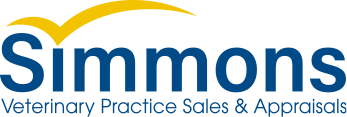By: Byron Farquer, DVM, CVA
Most practices find that product and supplies costs often consume 18-20% of gross revenue and are second only to payroll as the most expensive business cost. One must have an inventory manager complete with a detailed job description to manage inventory. Simply giving someone the title Inventory Manager without a clear roadmap, standard operating protocols, benchmarks, and instructions is a sure way to encourage disappointing results. You need to manage the inventory, ensure someone is in charge, price things correctly, and market in ways you never have before. Do not give up your product sales. Clients want to shop from you — they trust you, and product sales can be profitable if managed correctly. How?
Areas to Focus On
1. Buying Groups
First, join a buying group. Done well, these groups reduce drug costs and benefit from an economy of scale. Use strategic markups rather than across-the-board rules of thumb.
2. Need Urgency
Urgent medications such as antibiotics, pain medication, or injections are not as sensitive to price shopping and instead can have strong mark-ups. The urgency of need facilitates a client’s cost tolerance.
3. Exclusivity
Items no longer veterinarian exclusive, such as certain flea products, should be priced differently, usually lower than you’ve previously offered. You don’t need to price match, but you need to be close. Once the same product you sell shows up everywhere else, you are now compared to everyone else. If someone can Google a product you sell and find it readily available in many other locations, price becomes an issue. If you can’t price the product low enough to be competitive and still turn a profit, it’s time to replace those price-sensitive products with another good-quality substitute.
4. Dual-Marketed Products
If a veterinarian used to be the only source of a product but now every internet site, big-box retailer, feed store, and catalog sells the same product, it’s time to differentiate yourself. Yes, it might have previously been a big seller for you, but it becomes a commodity when you have the same product everyone else does. Dump the dual-marketed products.
If 5 airlines all have reasonably priced flights and are the same regarding service and amenities, price becomes a significant choice factor. But, if there is also an available chartered jet with a ticket cost slightly but not exorbitantly higher, the choice becomes more difficult. The charter jet won’t require an invasive search before boarding, will generally offer high-end refreshments and excellent customer service, and has no baggage claim delay.
Are you having a hard time letting go of certain products because you’ve used or recommended them for a long time? Ask yourself how long it took you to discontinue selling flea collars, powders, and home foggers when the new generation of flea medications came out years ago. Months? Years? No. Most of us strongly encouraged our clients to switch products in a very short period. They listened to you then, and they will listen to you now.
5. Exclusive Products
Surround yourself with veterinary exclusive products. Exclusive products don’t have to mean expensive. They simply mean “access restrictive.” When you fill your shelves with the same products clients can buy from Walmart, you give up your veterinary-exclusive advantage. You blend in and are just one of many choices.
6. Generic Medications
Dump the generics. Despite claims that all generics are equal to the original brand name or legacy drug, many of us have experienced variations in generic drug performance both as prescribing veterinarians and general consumers. The public expects generics to be cheaper due to competitive pricing, and as a result of their own perceived or real experiences, they feel generics don’t always perform as promised.
When you dispense the same generic drug as Costco or Publix, your client expects the price to be the most influencing factor. Most big-box retailers avoid legacy drugs due to lower margins or restrictive sales policies imposed by manufacturers. They focus on price alone, and you usually can’t win that battle. Legacy drugs offer you some level of veterinary exclusivity or differentiation. If you preferentially handle generics because you are bent on “saving your clients money” in hopes they will like you better, you dismiss behavior research that indicates the cost is not the most critical driver for consumer decisions.
7. Private-Labeled Products
You have numerous options for having pet products private-labeled. You can choose catchy or simple names, but either way, it will also have your practice’s name on it. A client isn’t going to find it for sale at any other veterinary practice, online, or any big-box retailer. You can instill a wider profit margin on these products in many cases. Where are they going to price compare?
One of the most popular private label products is therapeutic dog shampoos. A California practice switched their shampoos to private labeled products and increased their prices on average 30-50% over current pricing, bringing in over $12,000 more in profit in a single year.
8. Keep Prescriptions
Fight to keep the prescription! Make a solid argument to the client why the veterinary practice, rather than the retailer or internet warehouse, is the best source for pet meds — including verification of the shipping chain, manufacturer warranties, and storage and quality control adherence. Call that client and talk to them about their desire to purchase somewhere else. Price will usually be the first comment, but there is often more to the story if you dig deeper.
And don’t be surprised if your client just thinks you are priced higher when you are not. Some practices use signage or other client communications to show clients that they are competitively priced on certain products. If you want to play the price-matching game, make your website’s online pharmacy a bit more competitive than your in-clinic pricing, but impose the same purchase process restrictions as PetMeds and similar retailers. The online shopper has to place the order, pay in advance, commonly pay to ship, and wait for it to be delivered instead of walking into your practice, getting expert advice, and receiving the product right on the spot. People shop online for convenience by a margin of 2 to 1 over price. So you don’t even have to have the lowest price, but you need to make products available for sale to your clients online as not everyone can get to your practice during business hours.
9. Prescription Drugs
Use prescription drugs when possible. Consumers often perceive prescription drugs as more powerful, even when they are not; however, that may be true of some formulations. Other benefits of prescriptions include the following.
- Many newly released drugs or the newest pharma technology are only available by prescription.
- Prescriptions also require better record-keeping than OTC medications.
- Prescription drug dispensing may require additional doctor examinations, offering benefits beyond additional revenue, such as more frequent veterinary-patient-client interactions, which translate to improved compliance and continuity of care.
10. Continuation of Care
Stay in the loop of treatment. Dispensing oral pills with instructions to return in two weeks if things don’t improve opens the door for client compliance-induced treatment failure. Incorporating injectables (e.g., Convenia), technician-applied treatments (e.g., every 5th-day otitis flush and deep medication), or other techniques like smaller dispensed volumes for chronic treatment medications (thyroid or NSAIDs) requires more return visits, client-patient touchpoints, and, of course, refills.
11. Pricing
The industry has been lax on seriously structuring its services pricing. Annual “across the board” % markups are as sophisticated as many practices get with re-pricing. Many practices fail to adjust fees on services to make up for reduced product markups and their corresponding impact on profit. You can calculate the expected cash flow at a current drug’s pricing level and then again at a new lower price. Take that expected lost revenue and spread it over many service categories in the form of price increases on service items. Non-shoppable services are ideal candidates. Cashflow is preserved, drug prices remain competitive, can and services carry more load. When prices go up on drugs, and you feel you need to freeze your retail price or lower it, you need to redistribute the lost cash flow to other sales like services or watch your profit (and practice value) quickly erode.
12. Set Realistic Expectations
What business are you in? Be realistic with your expectations. Are you in the high volume, low margin product sales business, or are you in the veterinary medical health industry? Do you provide prescription drugs because it’s a useful tool in your arsenal to fight disease and dispense other products to enhance the pet’s well-being, or are you trying to gain a competitive pricing edge on Walmart? It’s okay not to be very price competitive when you offer uniqueness. Imagine Denny’s trying to sell a cup of diner quality coffee for $5.95, or even Starbucks trying to sell its unique coffee in a Denny’s at the same price?
How to Preserve Product Sales
Pharmacy and product sales remain an integral part of the current veterinary business model. Until that model dramatically changes and practices can develop a successful 100% services-only sales strategy, we need to preserve product sales. You can’t blindly mark up drugs 100% anymore, make across-the-board price % increases, and then give away your services. As much as we hate to hear it, we have to run practices like businesses. Luckily most don’t require a master’s in marketing and an MBA to remain profitable. You just have to be smart, competitive, and offer an exceptional sales experience between your staff and clients.
Simmons Is Your Trusted Guide
There is a clear correlation between veterinary practice value, product sales, and profitability, but you do not have to feel alone. The knowledgeable, expert team at Simmons Veterinary Practice Sales and Appraisals is here to help you navigate so your practice is as profitable as possible. Contact us today for more information.



